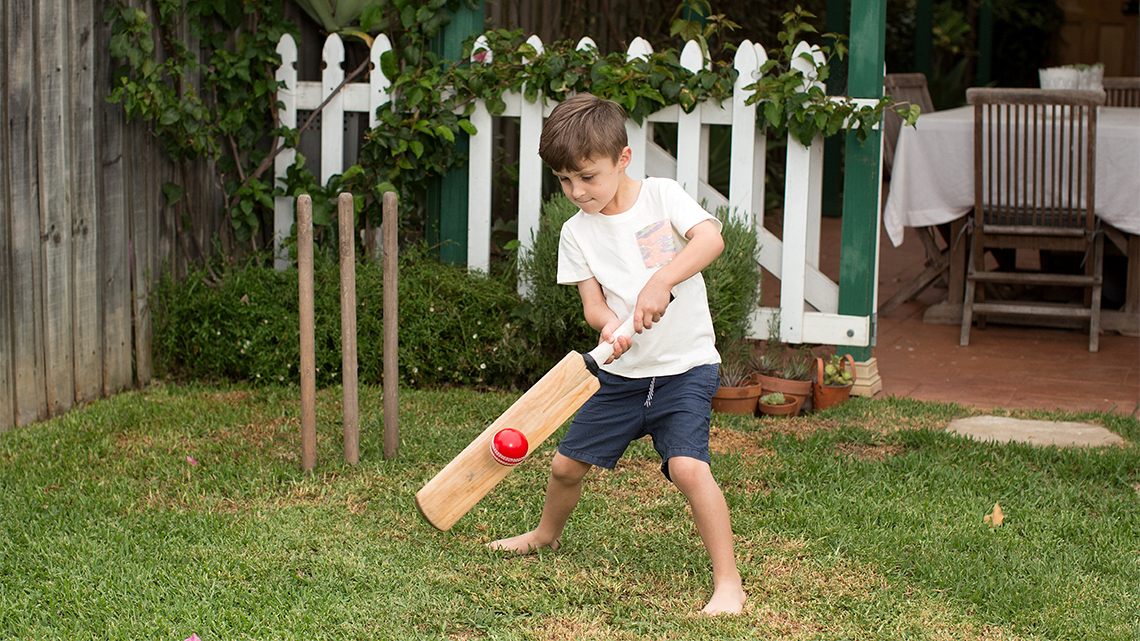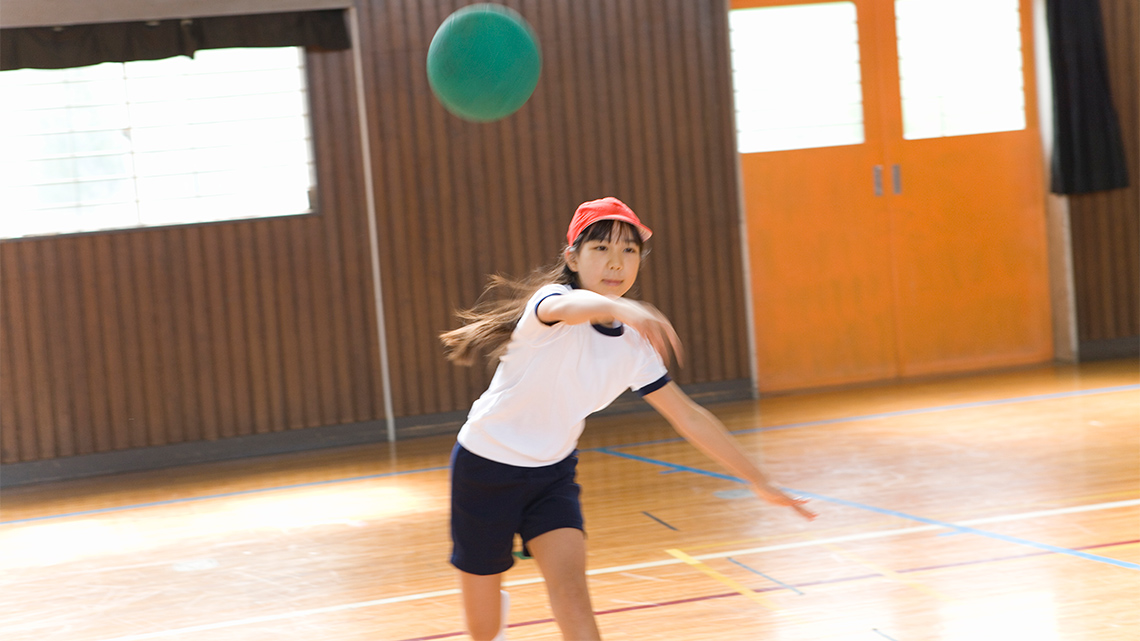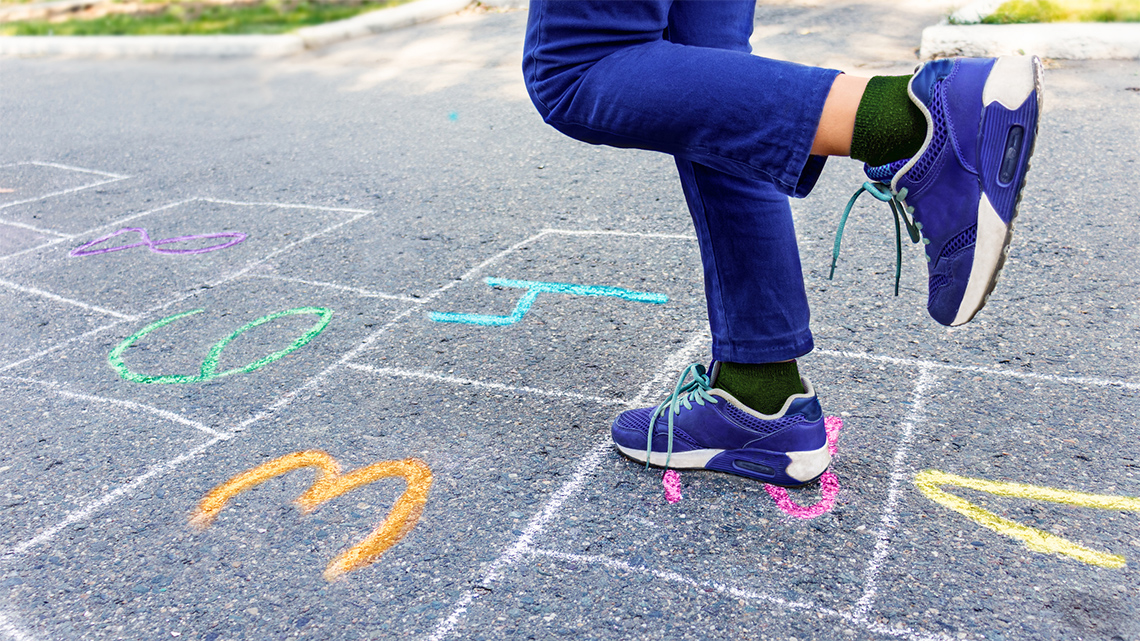Minds On
Notice and Wonder
Different games and activities can involve similar goals, equipment and rules. Explore the following images. What do you notice? What do you wonder?
Student Success
Think-Pair-Share
What are some similarities between the games?
Which games did you recognize?
What games or activities do you like to play?
How would you explain the rules of your favourite game to a friend?
You can record your ideas on paper, on a computer, as an audio or video clip, or by using another method of your choice.
Note to teachers: See your teacher guide for collaboration tools, ideas and suggestions.
Action
Components
All games and activities have different components or parts to them, like movement skills, rules, and ways to play fair.
Today, we are going to play some active games!
Before we get started, let’s do a safety check and a warmup.
Safety
Before you begin:
Warm Up
Let’s start!
Let’s warm up with this workout video!
Explore this video entitled “Power Up: Circus 4” to follow along with a circus themed workout.
Movement skills
Explore the following images. What kind of movements do you notice?
A movement skill is a main component for physical activities.
A few movement skills are running, rolling, walking, marching, hopping, jumping, skipping, stepping, and many more!
Task 1: Mix it up!
Always be sure to do your safety checks!
Choose 3 of the following movements to practise your movement skills:
Rules and boundaries
When playing a game, there are rules and boundaries. They help to create a safe environment for all students to join in and play.
If there are no rules, or the boundaries are unclear, games can become confusing.
Task 2: Let’s play!
Choose one of the following options to access an activity or explore both options and try each activity.
Always be sure to do your safety checks!
Option 1: Wall toss
Press the tabs to access this activity.

- an object that can be thrown (ball/basketball/cloth ball/beanbag/etc.)
- tape

- If possible, move to an open space near a wall. Use the tape to create 3 Xs on the wall.
- Have a starting point at a distance from the wall and the Xs.
- Move (jog/skip/walk) towards the wall and targets while tossing and catching the object.
- When you are no more than 3 metres away, throw the object towards one target.
- Catch the object as it rebounds back. Continue with steps 2 to 5 until all targets have been attempted. For each attempt, try a new movement for step 3.
Option 2: Keep it up
Press the tabs to access this activity.

- an object that can be thrown (ball/balloon/cloth ball/etc.)

- If possible, move to an open space.
- Toss the object into the air and try your best to keep it up!
- Use different body parts (hands, foot, head, etc.) to help keep the object up and away from the ground.
Challenge: Try to keep the object up for 10 consecutive tosses. How many times can you toss the object into the air before it reaches the ground?
Pause and Reflect
Pause and reflect
After playing the game(s), reflect on the following:
- Which rules would you change for either game? Why?
- Create your own boundaries for the game(s) you played. Why did you choose these boundaries?
Record your ideas in a notebook or another method of your choice.
Fair play

Another component of a game is to play fair and practise etiquette, which is similar to having manners when playing a game.
In other words, how do you make sure that you and the players are honest and fair?
Record your ideas in a notebook or another method of your choice.
Press ‘Fair Play’ to access how we can be honest and fair.
We can be fair and honest when everyone plays together, and we all follow the rules.
We can share equipment, take turns, and respect each other.
Task 3: Hopscotch
Always be sure to do your safety checks!
Press the tabs to access this activity.


- an object that can be thrown (ball/cloth ball/beanbag/etc.)
- chalk/towels
- If possible, move to an open space and create a hopscotch outline. You can
use the chalk to draw the outline. Or use towels and place them to look like
a hopscotch outline.
- Begin at the starting point and throw an object on the hopscotch outline.
- Move (hop/skip/jump) towards the object on the hopscotch outline and pick it up.
- Move back to the starting point and continue with steps 2 to 4 until you have moved to all parts of the hopscotch outline.
Pause and Reflect
Pause and reflect
After playing the game, reflect on the following:
- What movement skills did you practise?
- What are the rules for the game you played?
- If you were to play with a partner or as a team, how would you demonstrate fair play?
Record your ideas in a notebook or another method of your choice.
Cool Down
Cool down
Arm swing
Always be sure to do your safety checks!
Move around slowly around the room or your space while doing the following:
- swing arms slowly forward and back for 1 minute
- swing arms in front of body for 1 minute
- swing arms over head for 1 minute
Consolidation
Game time!

Create a game with components we explored in the Action section.
Be sure to include:
- goal of the game
- rules
- boundaries
- movement skills
- fair play
- optional: equipment
After creating your game, give it a try and share it with a peer or an adult.
Brainstorm
Let’s think!
Reflect on the following questions:
- Have you ever participated in an activity that you have not done before? How did it make you feel?
- Why is it important that we know some of the components of the activity before we participate?
- How does knowing the game and rules help you to be more motivated while playing?
Complete the Let’s Think! chart in your notebook or using the following fillable and printable document. You can also use another method of your choice.
| When I don’t know the game or the rules, I feel… | Knowing the components of a game before I play makes me feel… |
| Why? | Why? |
Press the ‘Activity’ button to access Let’s Think!
Reflection
How do you feel about what you have learned in this activity? Which of the next four sentences best matches how you are feeling about your learning? Press the button that is beside this sentence.
I feel…
Now, record your ideas about your feelings using a voice recorder, speech-to-text, or writing tool.
Press ‘Discover More’ to extend your skills.
Discover MoreCheck out this video entitled “Whose Side Are You On” to learn more about playing fair.
After exploring the video, respond to the following questions:
- Why do you think Amala was “loaned” to the other team?
- List 2 examples when a character(s) was not honest, or they didn’t play fair.
Record your ideas in a notebook or another method of your choice.








